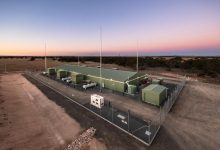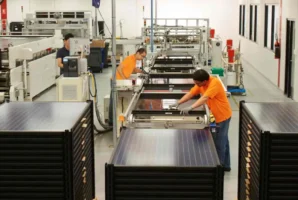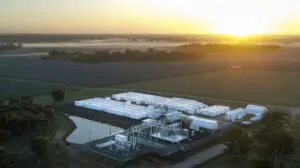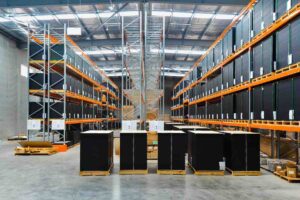One of South Australia’s “other” big battery installations, the 30MW/8MWh ESCRI ElectraNet battery storage system at Dalrymple, has earned enough revenue in its first two years of operation to return the $12 million in grant funding provided by ARENA to the project.
In a report published this week as part of a “knowledge sharing” deal that came with the funding, ARENA said the ESRCI had earned $22.6 million in frequency control ancillary services revenue and $319,820 in discharging revenue between December 2018 and December 2020.
“FCAS revenue peaked in the six months from December 2019 to June 2020, earning $15.6 million in addition to $102,000 discharging revenue, from a $76,000 charging cost,” the ARENA report says, indicating it cashed in on the same “islanding” event that deliver a huge windfall to the better known Tesla big battery.
“The arbitrage and FCAS markets provided revenue streams for the battery, allowing ElectraNet to return the $12 million ARENA provided to the project.”
As RenewEconomy reported six months into the battery’s operating life, the South Australia ESCRI – which stands for Energy Storage for Commercial Renewable Integration – is not as big nor as headline grabbing as the Hornsdale Tesla big battery, but it does do a number of things the Tesla battery can’t.
On top of the more standard skills of operating in the FCAS market and trading caps, the ESCRI – which is charged by AGL Energy’s 90MW Wattle Point wind farm – is configured to allow “islanding” of the Yorke Peninsula, to keep local lights on in case of grid problems elsewhere.
The “grid-forming” inverter capabilities it has pioneered on the main grid (the ability to use battery inverters to “create a grid”‘) are considered critically important, as they will be key to fashioning a renewables-based grid without synchronous generation.
The ESCRI has also supplied Fast Frequency Response (FFR) ancillary services into South Australia, reducing constraints on the Heywood interconnector linking SA and Victoria, and delivering increased flows, and reduced the amount of unserved energy to the region following losses of supply.
On this front the battery continues to impress, according to ARENA, which reports that in the two years from December 2018 the ESCRI was called on in 29 system events, responding almost instantly to inject power to arrest dips in voltage or reduce the duration of an outage.
One event in December of 2019 happened when lightning caused a nearby powerline to trip, at which point the battery maintained Dalrymple’s energy supply until the issue was resolved.
Not long after that, a catastrophic failure tripped a series of transmission lines, the report adds. On this occasion, the battery responded immediately, supporting the network to recover from the sudden voltage dip to become stable within 2.5 seconds.
“As one of Australia’s – and the world’s – first large-scale battery storage systems, the project has broken a lot of new ground,” the ARENA report says.
“[It has] delivered the largest autonomous regional microgrid, able to operate both connected to the NEM and also be islanded. In islanded mode, demand for electricity in the region is met entirely by renewables, with network regulation services provided by the battery.
“This has provided insights into what will be required to operate the South Australian electricity system with 100 per cent renewable energy,” ARENA says.










